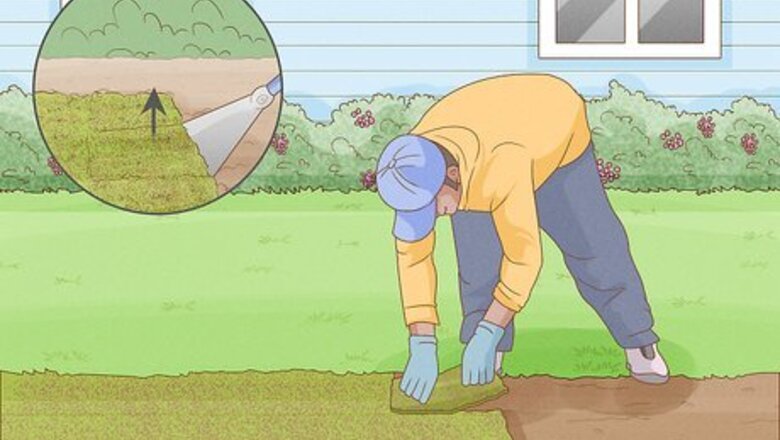
views
Planting Moss in Your Yard
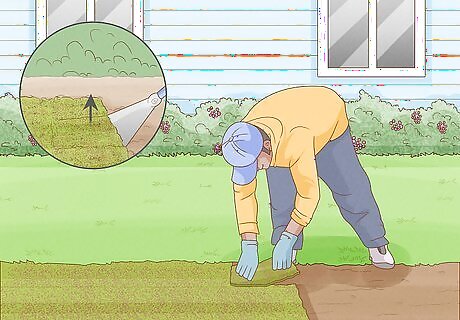
Collect strips of moss from your yard or a nursery. If you have moss on your lawn already, use a putty knife to gently scrape underneath the layer of moss and pry it up off the ground. If you don’t have any moss around you, head to a nursery and ask about their moss options. You can grab acrocarpous moss, or the moss that grows long strands that look like hair. Or, you can pick up pleurocarpous moss, a close-cropped moss that grows in a short, horizontal pattern. Moss doesn’t have a root system, so you don’t have to worry about disturbing anything underneath the soil.
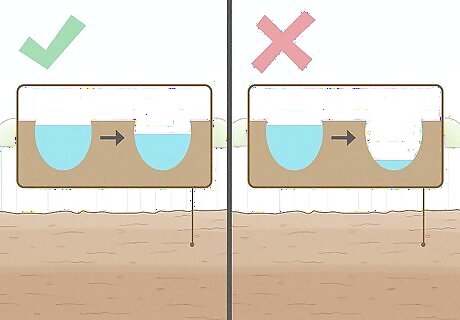
Select a moist area in your yard with minimal drainage. Moss isn’t too terribly finicky, but it tends to thrive in wet conditions. Choose an area in your yard that tends to flood in heavy rains, like an area at the bottom of a hill. Moss can help to improve drainage in your yard. Moss doesn’t have a root system, so it can grow easily over rocky soil that grass wouldn’t otherwise be able to cover.
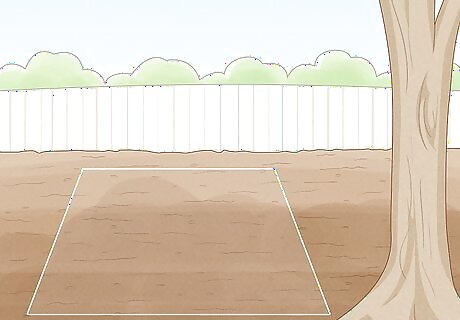
Go with an area that’s fairly shady. Most species of moss don’t do well in direct sunlight since they need a lot of moisture. Take a look out in your yard and find a spot that doesn't get a ton of direct sunlight, like an area under a tree or near the side of your home. There are a few species of moss that grow well in direct sunlight, but they are fairly uncommon.
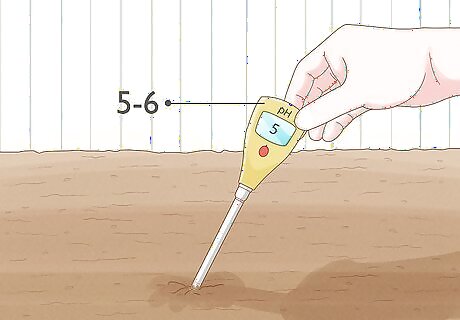
Test the soil for a pH between 5.0 and 6.0. Use soil test strips to find out what the soil pH is. Moss prefers acidic soil with a pH between 5.0 and 6.0, so you may need to raise or lower the pH, depending on your results. If you’re planting in soil or over a flat surface, make sure the surface is smoothed and totally flat. Unlike grass, moss will show small divots and holes in the ground or area it is planted. To raise the pH, add limestone to your soil. To lower the pH, add sulfur, aluminum sulfate, iron sulfate, or mulch.
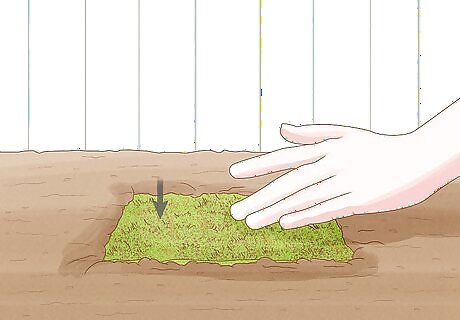
Press the strips of moss onto the soil. Rake up any leaves or debris and remove them from the area, then gently level out the dirt so it’s mostly flat. Place each selection of moss onto the area with a firm hand. Press down to embed the moss strips in the surface of the soil. You can press some of the moss onto stones or rocks, but make sure the majority of the moss is on soil.
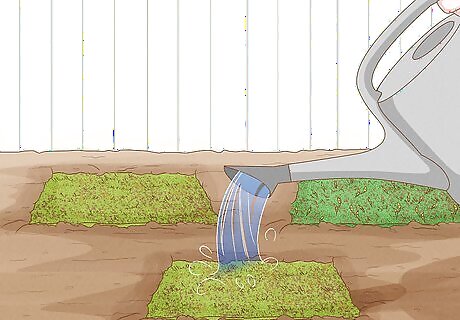
Water the moss daily for the first 3 weeks to encourage growth. Use a sprinkler head or hose with a very fine nozzle to mist the moss since direct water pressure can damage it. Alternatively, you can use a gentle irrigation system to continually water it. If the moss starts looking dark green or patchy, it is likely receiving too much water. You can lessen the watering after a month or so, but the moss should be kept moist whenever possible. You’ll know the moss has established itself when you can gently tug on it and it doesn’t move.
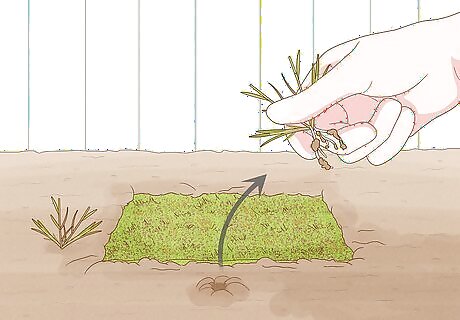
Remove weeds around the moss to help it thrive. Weeds, especially grasses, can steal the moisture from around the moss and leave it looking dry and brittle. If you notice any weeds popping up around your moss, pull them out by the roots. Keep an eye on your plot of moss throughout the seasons to make sure it has enough room to grow and thrive. Moss can’t kill grass or weeds, it only covers the land that they would have grown on. Moss can spread fairly quickly in your garden or lawn, especially if you have a large dirt patch with nothing on it. If your moss gets out of control, you can pull some up with your hands to stop it from growing.
Growing Moss on Alternative Surfaces
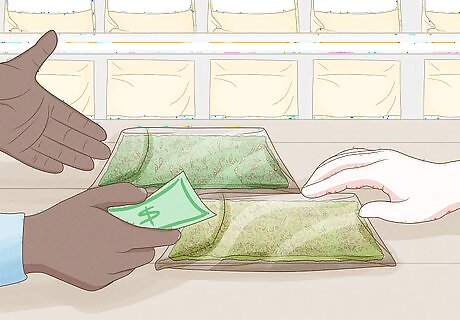
Gather moss from outside or from a nursery. Use a putty knife to scrape moss either off the ground or off of a vertical surface, like a wall or a fence. Try to look for pleurocarpous moss, or moss that is closely-cropped and growing in a horizontal pattern. The other type of moss has long strands, and it doesn’t grow well on alternative surfaces.
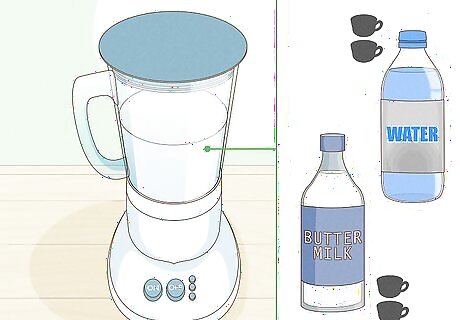
Pour 2 c (470 mL) of water and 2 c (470 mL) of buttermilk in a blender. Buttermilk is both acidic and sticky, making it the ideal base for your moss. Pour equal amounts of water and buttermilk into a blender to get your moss smoothie started. You can also use plain yogurt if you don’t have buttermilk.
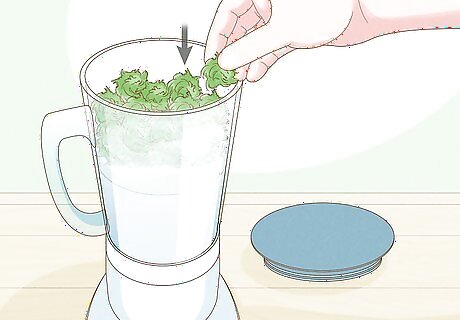
Fill the blender up with crumbled moss. Grab a few handfuls of healthy moss and crumble it up into the blender until it’s full. The moss can be wet or dry. The amount of moss you use doesn’t have to be exact, but when in doubt, more is better.
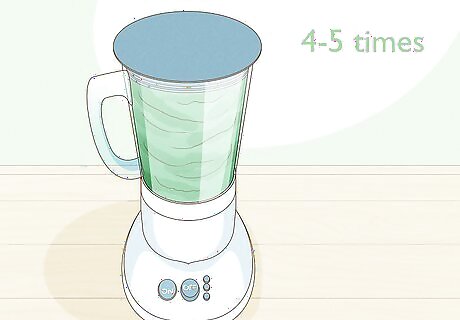
Pulse the blender to blend the ingredients into a thick mixture. Give the blender 4 to 5 pulses until the ingredients look thoroughly combined. Aim for a consistency similar to a milkshake or smoothie. Avoid blending the mixture too much. If the moss pieces are too small, they may not want to take hold and grow again.
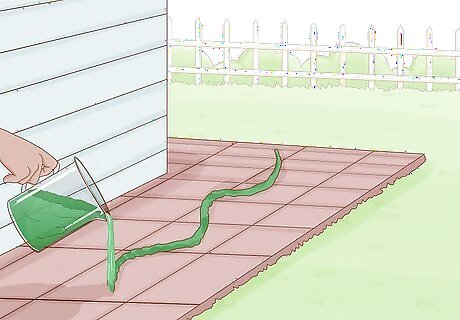
Pour the mixture on surfaces like brick, stone, pots, or fences. Since the buttermilk is sticky, it will hold the moss against any vertical surface you choose. Choose shaded surfaces that are easy to water. Use a rag or a paintbrush to spread the mossy mixture onto fences, the sides of pots, stones or bricks, or even the sides of your home. If you want to get super fancy, try making a pattern or spelling out words with your moss.
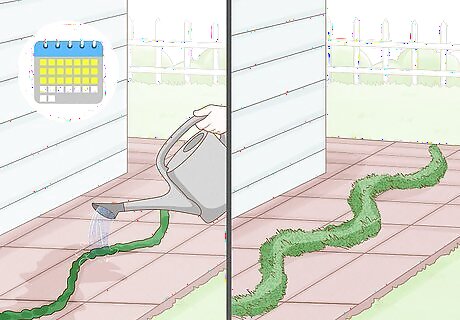
Water the moss daily for the next 2 to 3 weeks to establish it. As the moss starts to grow and take hold, it needs to be kept really moist. Use a watering can to gently water the moss for the next couple of weeks until it looks healthy and green. Keep the moss out of the sunlight so it can stay cool throughout the day. You can also use a spray bottle to mist the moss, if that’s easier.




















Comments
0 comment